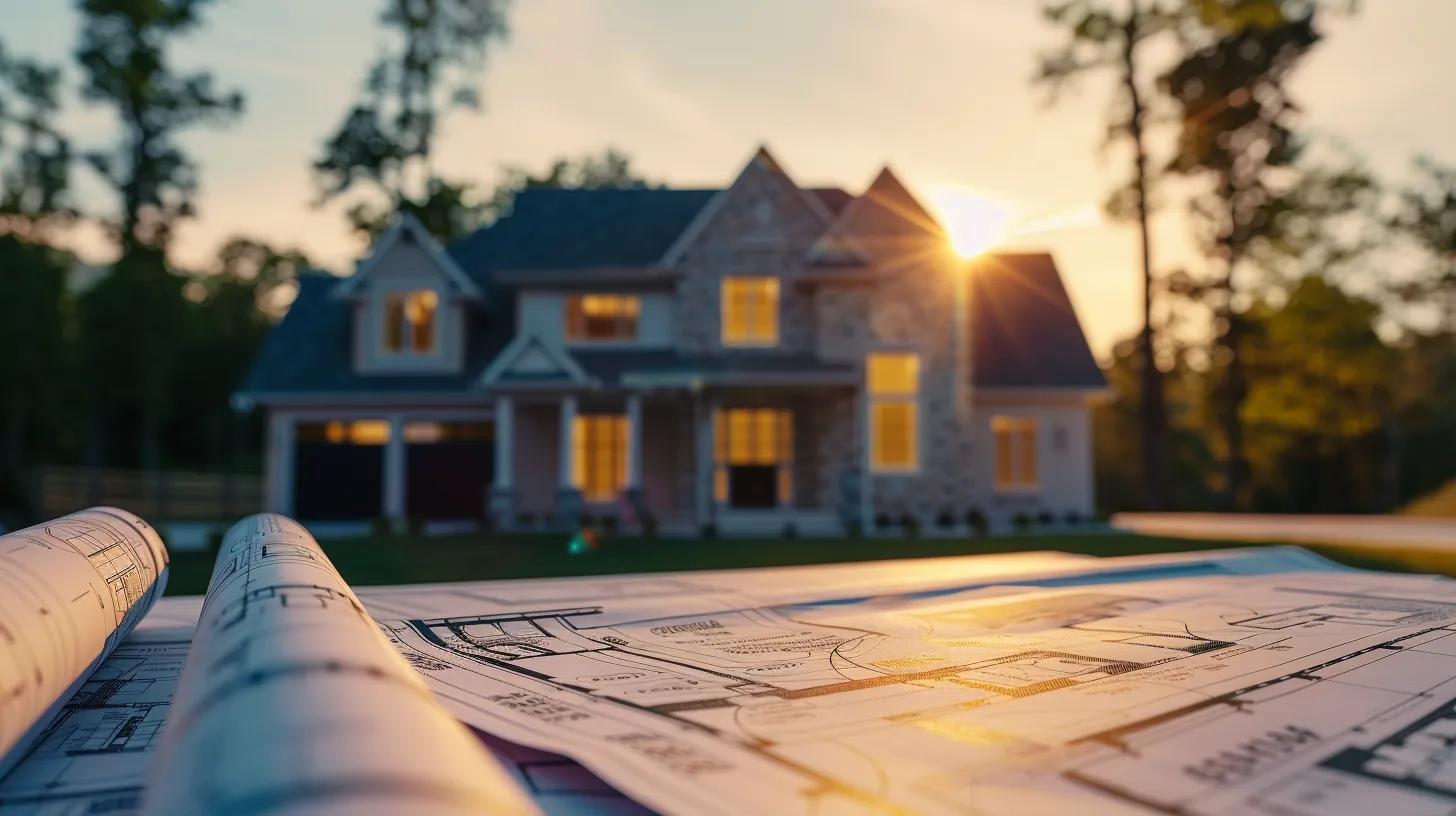
How to Excel in Custom Home Project Management
Custom home project management can often feel overwhelming for many. Did you know that effective resource allocation can significantly improve the execution of your custom home projects? This article will explore essential strategies to streamline the process, such as building a strong project team and utilizing 3D modeling technology. By addressing common challenges home builders face, this content will help readers achieve smoother project management, minimize delays, and create a solid backup plan for unexpected issues. Engaging with these insights can elevate your approach to custom home management.
Key Takeaways
Setting clear goals enhances the success of custom home projects.
Effective communication fosters collaboration and satisfaction throughout the construction process.
Regularly monitoring progress helps keep projects on track and aligned with client expectations.
Utilizing technology improves organization and simplifies project management tasks.
Seeking client feedback drives continuous improvement and better project outcomes.
Establishing Clear Goals for Custom Home Projects

Establishing clear goals is vital for the success of custom home projects. This includes defining measurable objectives to track progress, aligning those goals with the client's expectations, and creating a timeline for important milestones. By regularly monitoring progress and adjusting goals as necessary, custom home builders can enhance the customer experience and leverage automation for better efficiency.
Define Measurable Objectives for Project Success
Defining measurable objectives is key for users managing custom home projects. These objectives guide negotiation discussions and help establish a clear price framework. With proper knowledge of project expectations, builders can provide clients with specific milestones and results to track throughout the construction process:
Identify client goals and specific needs.
Establish a clear timeline for each phase of the project.
Set budget limits and discuss pricing transparently.
Monitor progress and adjust plans as necessary.
Regularly communicate updates to ensure alignment with client expectations.
Aligning Goals With Client Expectations
Aligning goals with client expectations is essential for effectively managing custom home construction projects. Builders should maintain open communication, allowing clients to express their needs and preferences throughout the process. By using a system to track these insights, builders can ensure that each stage of the project, from design to completion, meets the client's vision, creating a smoother experience and satisfaction.
Creating a Timeline for Project Milestones
Creating a timeline for project milestones helps ensure that custom home projects stay on track. By incorporating a strategic approach, builders can set clear dates for crucial tasks, transforming the timeline into a checklist to monitor progress. This method maintains alignment with clients' expectations while effectively integrating home automation features, enhancing overall project management and demonstrating key soft skills in communication and adaptability.
Monitoring Progress and Adjusting Goals as Needed
Monitoring progress during construction is critical for keeping a custom home project on track. Builders should use a reliable database to record milestones and resource allocations, allowing them to analyze progress at any point. If goals need adjustments due to customer feedback or unforeseen challenges, timely changes can improve project outcomes and increase client satisfaction.
Building a Strong Project Team

Building a strong project team is essential for successful custom home project management. This involves selecting qualified contractors and subcontractors who bring innovation to the table. Effective communication among team members fosters collaboration while assigning clear roles and responsibilities ensures accountability. Implementing collaborative tools creates a snapshot of progress, making audits easier and architecture management more efficient.
Selecting Qualified Contractors and Subcontractors
Selecting qualified contractors and subcontractors is a vital step in ensuring success in home construction projects. Builders should look for professionals with a solid reputation, relevant experience, and specialized skills that align with the project's needs. A well-organized file system or directory for contractor information can streamline this process, making verifying qualifications and past performance easier and directly contributing to project efficiency and profit.
Fostering Effective Communication Among Team Members
Effective communication among team members is crucial for a smooth custom home project management workflow. Establishing clear functions for each team member helps streamline processes, ensuring everyone understands their roles and responsibilities. Integrating tools such as project management software enhances collaboration and provides real-time updates that are essential for navigating complex tasks, much like in mergers and acquisitions where timely information can drive success.
Assigning Clear Roles and Responsibilities
Assigning clear roles and responsibilities within a custom home project team is essential for effective project management. When each team member knows their specific tasks, it reduces the risk of confusion or overlap, allowing everyone to focus on their roles. For instance, using a package manager tool can help streamline responsibilities by providing a centralized place to track who is accountable for which portion of the project, ensuring tasks are completed on time.
Implementing Collaborative Tools for Project Management
Implementing collaborative tools is essential for improving efficiency in custom home-building projects. Platforms that allow teams to document progress, share plans, and communicate in real-time can streamline workflows significantly. For instance, incorporating 3D rendering software can enhance project visualization, help team members and clients see designs in 3D, and allow quicker decision-making and adjustments on the spot.
Developing a Detailed Project Plan

Developing a detailed project plan is essential for successful custom home management. This includes creating comprehensive budgets that account for contingencies, establishing realistic timelines, and identifying potential risks early. Incorporating client feedback loops ensures that developments align with their vision. These strategies support effective training and ultimately promote strong risk management throughout the process.
Creating Comprehensive Budgets That Account for Contingencies
Creating comprehensive budgets that account for contingencies is vital for custom home project management. This approach helps builders prepare for unexpected costs that may arise during construction, such as material price increases or unforeseen site issues. By setting aside a portion of the budget for these contingencies, builders can ensure projects remain financially viable, ultimately leading to smoother execution and higher client satisfaction.
Establishing Timelines With Realistic Deadlines
Establishing timelines with realistic deadlines is a foundational step in successful custom home project management. Project managers should assess all construction phases, including weather, material availability, and labor schedules. By setting achievable deadlines and involving clients in this planning stage, builders can create a shared understanding of the project timeline, reducing the risk of delays and ensuring satisfaction throughout the process:
Assess all phases of construction for accurate planning.
Consider external factors such as weather and material availability.
Set achievable deadlines to avoid project delays.
Involve clients in the timeline planning stage for transparency.
Regularly review timelines to adapt to any new developments.
Identifying and Addressing Potential Risks
Identifying and addressing potential risks is a critical aspect of developing a detailed project plan for custom home management. Builders should regularly assess factors such as weather conditions, supply chain issues, and labor availability. By proactively discussing these risks with clients and incorporating contingency plans, builders can mitigate disruptions and ensure that projects remain on schedule and within budget.
Including Client Feedback Loops in the Planning Process
Including client feedback loops in the planning process is fundamental for effective custom home project management. By actively seeking client input at various stages, builders can ensure that the project aligns with the client's vision and expectations. This approach fosters a sense of ownership and satisfaction, as clients feel heard and valued, ultimately contributing to a more successful and streamlined building experience.
Implementing Effective Communication Strategies

Effective communication strategies are crucial in excelling at custom home project management. Regular update meetings keep stakeholders informed while utilizing project management software, which ensures transparency throughout the process. Maintaining open lines of communication with clients fosters trust, and addressing conflicts or challenges promptly can prevent further issues. Each of these strategies contributes to a smoother project flow and enhanced client satisfaction.
Establishing Regular Update Meetings With Stakeholders
Establishing regular update meetings with stakeholders is a key custom home project management strategy. These meetings keep everyone informed on the project’s progress and allow for immediate discussions about any changes or concerns. For example, weekly check-ins can help address potential delays before they escalate, ensuring a smoother process for all involved:
Schedule consistent meetings to review progress.
Encourage open dialogue about any issues or questions.
Adjust project plans based on client feedback and updates.
Utilizing Project Management Software for Transparency
Utilizing project management software is a vital tool for transparency in custom home project management. This software allows builders and clients to track progress in real time, ensuring everyone stays informed about updates and potential issues. Centralizing communication and documentation in one platform simplifies sharing important information, leading to better collaboration and trust among all parties involved.
Maintaining Open Lines of Communication With Clients
Maintaining open lines of communication with clients is essential in custom home project management. Regular check-ins and updates help clients feel involved and valued, promptly addressing their needs and concerns. This practice fosters trust and aids builders in making necessary adjustments, ensuring that the final outcome aligns with the client's vision and expectations.
Addressing Conflicts and Challenges Promptly
Addressing conflicts and challenges promptly is essential for effective custom home project management. By setting a proactive approach to communication, builders can quickly identify issues before they escalate, ensuring a smoother workflow. For instance, when unexpected delays arise, discussing the problem with the client immediately can foster transparency and trust, helping everyone stay aligned on project goals:
Encourage open dialogue about concerns and issues.
Set regular check-ins to monitor potential conflicts.
Implement solutions quickly to maintain project momentum.
Utilizing Technology for Enhanced Project Management

Utilizing technology significantly enhances custom home project management. Integrating project management tools and software improves organization and communication. Leveraging 3D Modeling software allows for effective design visualization. Tracking progress through mobile applications provides real-time updates while analyzing data and supports informed decision-making. Together, these strategies create an efficient workflow and better project outcomes.
Integrating Project Management Tools and Software
Integrating project management tools and software is significant in custom home project management. These tools help organize tasks, keep track of timelines, and improve communication among team members. For instance, using software that allows project updates and document sharing in one place makes it easier for builders and clients to stay informed and connected:
Organizes all project details in a centralized platform.
Facilitates real-time communication for quick updates.
Tracks progress and makes it easy to identify potential delays.
Tracking Progress Through Mobile Applications
Tracking progress through mobile applications is a game-changer in custom home project management. Builders and clients can stay updated on construction milestones and receive real-time notifications about changes or delays. This instant access to information enhances communication and helps make quick decisions, leading to improved project outcomes.
Analyzing Data for Informed Decision-Making
Analyzing data is essential for making informed decisions in custom home project management. Builders can assess project metrics such as budget usage, timeline adherence, and resource allocation to identify trends and improvement areas. For instance, by reviewing past projects, builders can better estimate costs and timelines for future projects, ultimately leading to more successful outcomes and higher client satisfaction.
Assess project metrics to identify trends.
Review past projects for improved estimates.
Use data to enhance decision-making processes.
Adjust strategies based on performance analysis.
Communicate findings with the project team to foster collaboration.
Conclusion
Excelling in custom home project management requires clear goal-setting, effective communication, and leveraging technology. Builders must align objectives with client expectations while continuously monitoring progress and adjusting plans as needed. Implementing structured feedback loops fosters collaboration and innovation, leading to more satisfying outcomes. By embracing these strategies, builders can enhance efficiency, improve client satisfaction, and achieve successful project completion.


